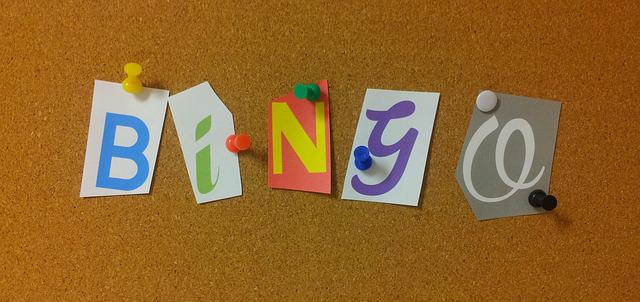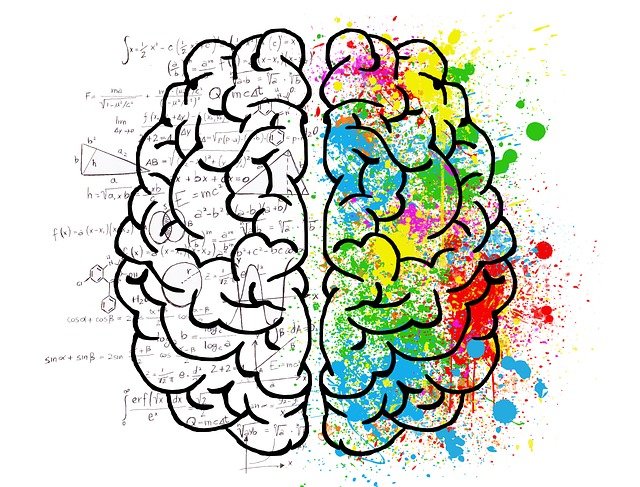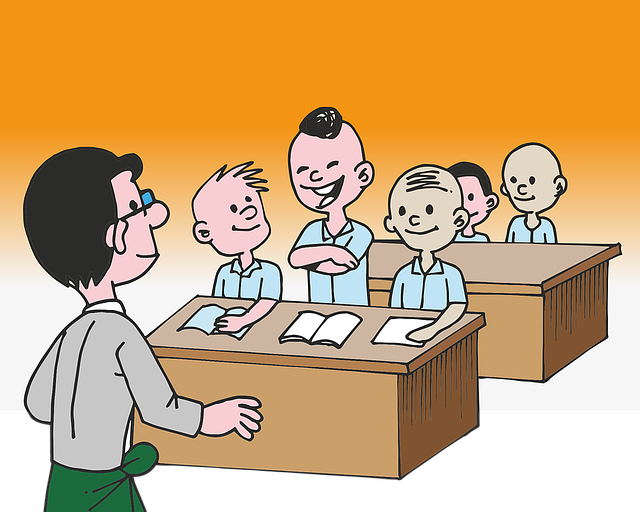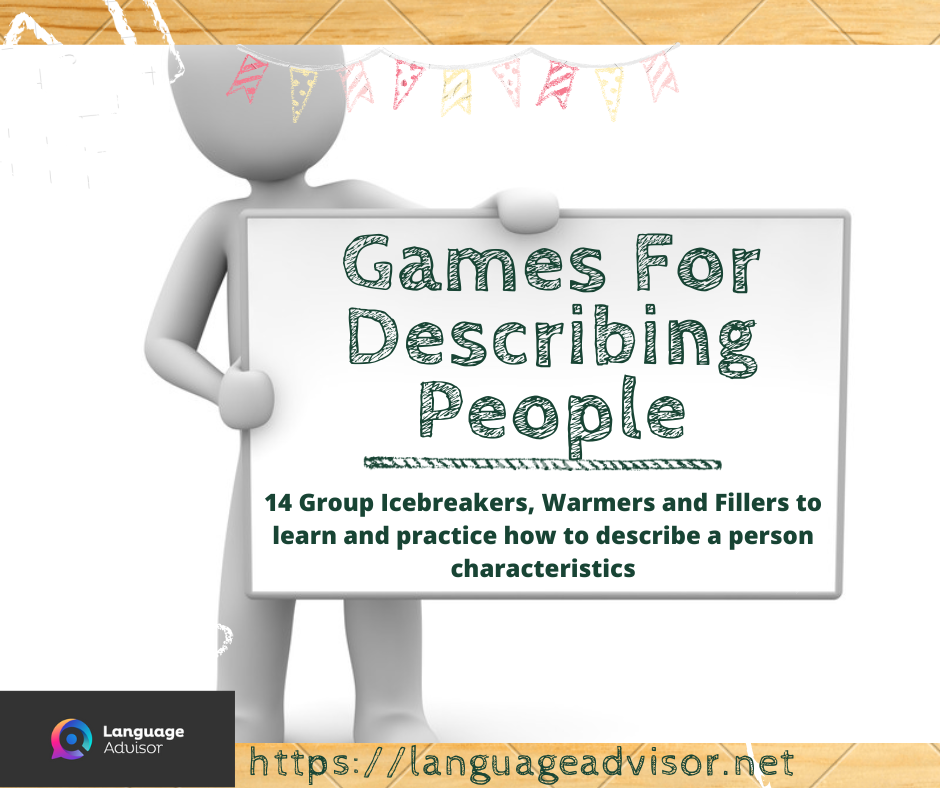Games For Describing People. 14 Group Icebreakers, Warmers and fillers to learn and practice how to describe a person characteristics in all languages for all ages.
Games For Describing People
Games For Describing People
These icebreakers, warmers and fillers are ideal for learning and practicing how to describe a person characteristics and to talk about their personality and feelings.
It is important to have a collection of such short activities to help structure your lessons.
Sometimes, the best way for students to try something new is through a game. Games keep learning fun and lighthearted and can make it easier for students to take risks. These games will go a long way toward easing introductions.
It is also useful to have a number of activities up your sleeve to use as fillers if you feel your lesson is running shorter than expected or you feel students would benefit from a change of pace within the lesson.
- Icebreaker and Warmer: to engage learners at the beginning of a lesson.
- Filler: to change the pace of the lesson in the middle of the lesson.
Effective Icebreakers, warmers and Fillers have 5 basic features:
- They are short (ideally 5-10 minutes only).
- They are fun and engaging.
- They are simple to explain.
- They require little preparation.
Good teaching is 1/4 preparation and 3/4 theatre.
~
Gail Goldwin

These icebreakers, warmers and fillers are ideal for learning and practicing how to describe a person characteristics and to talk about their personality and feelings.
Games For Describing People
PEOPLE BINGO

This activity is a great game for students to ask each other questions about themselves.
Using the same outline as you would a normal bingo sheet, fill in each block with questions. For example, find someone who has a brother or sister, find someone who can play the piano, find someone who is crazy about chocolate, find someone who is fan of Johnny Depp, etc.
You can base your questions on students levels. All students receive the bingo sheet and they must go around the class and fill in the entire sheet with different people’s names.


PERSONALITY STRUGGLE
This activity is a great way to talk about personalities.
Begin by telling your students about an internal struggle between two sides of your perosnality (bold side vs timid side or harworking side vs lazy side), providing a brief example of what each side says to you.
After a few minutes of preparation in pairs, have students present their struggle to the class.


CELEBRITY INTERVIEWS
Collaborate with your students on a list of famous people, including movie stars, politicians, athletes and artists. Have every student choose a famous person and put them in pairs to interview each other, especially talking about their life experiences and personalities.
You can make it competitive by having them recording a video of the interview and then having a vote for the best-performed interview.

SAY A COMPLIMENT

Hand the students a ball of yarn. Have them toss it to one another, while saying something positive about their personality and physical aspects, holding onto the end of the yarn.
Continue in this manner until there is a web between all students. Teenagers have a lots of fun.

FEELINGS AND PICTURES

Discuss with the class how words can express or describe emotions. Brainstorm vocabulary of emotions and feelings, and ask your students to write down words or expressions that they feel confident to use or would like to experiment in using.
Procedure
Firstly, display reproductions of several paintings on slides if possible. Ask your students to write down their feelings or impressions as they see each painting.
Then, divide the class into small groups and ask them to discuss their impressions and the vocabulary they have used to to describe their feelings. Finally, ask each group to choose a picture and make up a title that sums up the group’s feelings about it.

MY IDEAL PARTNER

This activity leads to practice vocabulary about personal qualities and some stimulating conversation in addition to critical thinking as students weigh the qualities of what makes and ideal partner.
Procedure
Begin the discussion by introducing the topic and brainstorming some personal qualities on the board: intelligent, has a sense of humor, etc. Then pose the question of who students’ ideal partners are.
Model a response as necessary: my ideal partner is someone who is intelligent, caring and successful.
Have then your students get into groups and talk about their ideal partner. You might also ask them to make a video of the discussion.

CLASS REACTION

Students take turn in the HOT SEAT with their back to the board and must not turn around. You write a word on the board and the rest of the class reacts to it. Eg. happy, sad, bored, interested, energetic, emotional, etc.
The student in the hot seat must then guess the word from the class reaction to it.

Now, some activities to learn and practice talking about themselves:
SHOW A PHOTO

This activity is a valuable exercise to get students to share information about themselves and to find out what is important to them in a very short time.
Procedure
Ask your students to show 4 photos which represent events, people or places that are important to them.
Students can decide for themselves which information they want to relay to the rest of the class. The classmates then have an opportunity to practice their questioning skills to find out more.

TOILET PAPER ICEBREAKER

Using toilet paper, students are immediately interested in what’s going to happen and you have a captivated audience and it makes for a fun and expectant atmosphere.
Procedure
All you need is toilet paper. Firstly you tear off some squares of toilet paper by yourself. Then you offer to do the same to your students without any explanations, taking as many sheets as they think they’ll need.
When everybody has toilet paper you explain the rules: they must say as many sentences about themselves as many squares of toilet paper they have. You should introduce yourself firstly in order to show the example.

TELL ME SOMETHING I DON’T KNOW

Write on the board Tell me something I don’t know, then ask your students questions about thinks they know about and you don’t, such as their lives, cultural background, interests and work.

HOW ARE YOU FEELING

Students are given a long, thin strip of paper, and write a sentence describing how they feel at the moment. Give out scissors so that they cut up the strips into individual words.
Students shuffle the words and leave them in a pile on their chair. They change places and rearrange someone else’s sentence.

FAVOURITES

Divide the board into 4. In one sections write your the name of your favourite food , in another your favourite country, in the third your favourite book and the last your favourite person (famous or otherwise). Elicit questions from your students as to why you’ve written these on ther board. Ask then your students to do the same on a piece of paper and then work in pair to discuss their choices.

YOU ARE WHAT YOU WILL

Tell the class that they are to imagine another life. In this new life they can take the form of an animal, a plant or an object (not a human being!). Ask them to tell what they are and to describe themselves. Encourage the other students to ask anything they like about the new personality, its function, background, feelings, etc.

LYING

Have the students form pairs and tell them they ar to talk to their partners about themselves. One partner will talk while the other takes notes. Then they reverse their roles. They can reveal as much or little about themselvesas they like, but about 3/4 of whta they say should be lies.
Have the students repeat this process 2 or 3 times with different partners. Each time they meet a new partner, they give different information. However the information should be about the same areas. In other words, they talk about the same subjects with each partner but tell different lies.
Then have the students report back the whole group about what they heard from each of their partners, using their notes as a guide. As each student reports, all those who met the same person listen carefully and then point out the discrepancies between the stories.
The fun comes in trying to decide what the truth really is. Each person finally tells the truth.

Games For Describing People
Here are some activities you can find on Language Advisor.
RIGHT CLICK TO READ:
Games For Describing People and Feelings In English

Games For Describing People In French

Games For Describing People In Spanish

Games For Describing People in German






